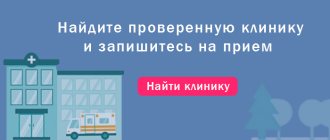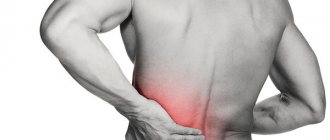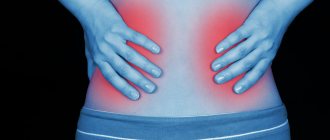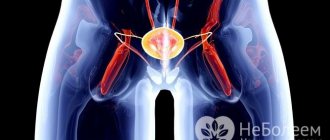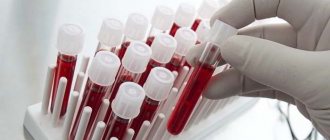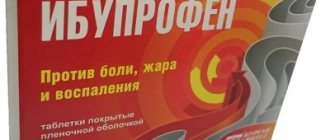Mom's notes.
Pyelonephritis. Who is to blame, what to do and how to live further? These are the questions parents ask themselves when they hear the diagnosis “the child has pyelonephritis.” Pyelonephritis is a bacterial inflammatory disease that affects the pyelocaliceal system and the parenchyma (tissue) of the kidneys. Acute and chronic. Acute pyelonephritis - everything is clear from the name itself, we lived - we didn’t bother, and then bam bam and everything is bad. Chronic - like any chronic disease, it proceeds quietly, not typically and in every way unusual. But there is also primary pyelonephritis: there are no anomalies in the development of the kidneys or urinary tract, but the disease has developed. And there is secondary pyelonephritis, which occurs against the background of the presence of pathologies in the structure of the kidneys and urinary tract, which, in turn, are often detected at an early age. And this disease is concomitant.
In a child with kidney problems, this diagnosis sounds like “secondary chronic pyelonephritis.” And not because the mother was not noticed and the disease started, but because pyelonephritis manifests itself not typically, periodically, and until the main problem is eliminated - the pathology of the development of the kidneys or urinary tract - it will continue to manifest itself.
All relatives will immediately say that the mother is to blame, who “didn’t notice”, “got a cold”, and also Komarovsky - the villain with his bare legs and walks without hats! (4). But the culprit of this disease is not a person, but a bacterium, and most often a banal Escherichia coli (the leading pathogen is E. coli and other representatives of the Enterobacteriaceae family (2). Due to the structure of the genitourinary organs, pyelonephritis is more common in girls. The coli enters the urinary system , and there it’s not far from the kidneys, and does its bad job - the inflammatory process begins, which, in turn, is expressed by: the child’s condition (intoxication, pain, fever), changes in urine - very high leukocytes (not 10 and 15, but 50 - 100 or more), the presence of protein and bacteria. Therefore, a urine test, especially in children of the first years of life, must be taken every time there is a fever or intoxication to exclude a urinary tract infection (UTI) in the absence of signs of another disease. And, of course , a blood test should show an inflammatory process of a bacterial nature - leukocytosis, acceleration of ESR, a shift in the leukocyte formula to the left, with severe inflammation - anemia.But, since there is nothing unambiguous in medicine, a blood test must be considered as a whole with other symptoms and tests. The final diagnosis can only be made by a doctor.
The causative agent is a bacterium. Therefore, herbs, drops, “peas” and so on are not treatment. Treatment with antibiotics only. To choose the right antibiotic, you need to have your urine tested for sterility (urine culture tank). But not everything is so simple: in many countries it is believed that this test has diagnostic value only when urine is collected through a catheter! (2) The catheter method is rare in our country, therefore, as a rule, when prescribing antibiotics for acute pyelonephritis, doctors are guided not by the result of urine culture, but by statistical data and studies conducted in a given country. Those. The antibiotic is usually prescribed empirically (empirical - based on experience, observations, experiments, studied facts - author's note).
The drugs of choice for the doctor are (1): – amoxicillin/clavulanate, – ampicillin/sulbactam, – cephalosporins of the II-IV generation (cefuroxime, cefotaxime, cefoperazone, ceftriaxone (this drug can cause jaundice), cefepime).
Alternative drugs(1): – ampicillin + aminoglycosides (gentamicin, netilmicin, amikacin) – co-trimoxazole (in regions where the level of E. coli resistance is less than 10%.)
The course ranges from 7 to 14 days, depending on the severity and related data. Determined only by a doctor. As for additional appointments. Most often they also prescribe: Canephron or Nitrofurans (Furagin, Furamag) for a long course of about a month. The goal is to prevent relapse. The recommendations of the American Academy of Pediatrics (2011) do not say a word about this method of prevention (3). The European Urological Association Guidelines (2006-2007) in the section “Prevention of UTIs in children” indicate that in cases of increased risk of developing pyelonephritis (for example, with VUR) and recurrent UTIs, low-dose prophylaxis is recommended. The most effective drugs are nitrofurantonin, trimethoprim, cephalexin and cefaclor (2). If treated incorrectly, pyelonephritis can become chronic (advanced, untreated disease). Therefore, treatment must be taken seriously! And strictly follow the doctor's instructions. With the right treatment, the child’s condition should improve within 24 to 48 hours, and on the third day there should be an improvement in urine and blood tests. I hope that all parents understand that self-medication in this case cannot be done. In case of severe form (temperature over 39, which is not reduced by paracetamol or ibuprofen, provided: air 18-20 degrees, humidity 40-60%, drinking plenty of fluids, wiping with warm water); vomiting and diarrhea (if it is impossible to give oral rehydration medications), of course, hospitalization is recommended. If possible, it is better to avoid the hospital: unfortunately, in our time it is far from comfortable there and the likelihood of getting additionally sick is very high, and injections in the butt are far from beneficial for a child. Uncomplicated pyelonephritis can be easily treated at home - if the parents have common sense.
How to live further?
The most important thing is to remember that very often children get sick with pyelonephritis once! There is no need to become paranoid and not sleep at night. Any additional research is necessary only if pyelonephritis recurs more than 2 times in girls and 1 time in boys. The purpose of the examination is to exclude pathologies of the kidneys and urinary tract. By the way, this pathology is very often diagnosed, thanks to modern ultrasound machines, even in utero! Therefore, there is no need to urgently run and expose the child to various manipulations after the first case of pyelonephritis: ultrasound + voiding cystography is the minimum option.
I would like to focus on lifestyle! In any case, only a doctor prescribes treatment, but the parents organize the life of the child. Therefore, the lifestyle of a child who has suffered pyelonephritis should be as opposed to popular opinion as possible (4). This child vitally needs strong local immunity - any acute respiratory infection can trigger a relapse. Many medications pass through the kidneys. And strong local immunity, as everyone knows, can only be achieved by: frequent walks, swimming in cool water, barefoot walking, gymnastics, drinking plenty of fluids, and cool and humidified air. As for sitting on the floor and ground. Sitting on a cold surface for a long time is prohibited for everyone. If a child in a diaper sits on a tile for 10 minutes, this is not the case. And a very important point is hygiene. To do this, review the episodes on the hygiene of boys and girls from the program of the School of Doctor Komarovsky. The main thing with hygiene is not to overdo it! But follow it regularly!
As already mentioned, pyelonephritis is a dangerous disease for the kidneys, so registration with a nephrologist is guaranteed. Most often, a general urine test is prescribed for control once a month and for each disease. Although some physicians report that surveillance tests are not necessary unless there are signs of pyelonephritis and other UTIs (3).
Urine analysis is very capricious, and it must be collected correctly!
Basic rules for collecting analysis: – Morning urine; – Wash well with running water; – Sterile containers; – Delivery to the laboratory within 1.5 hours.
More detailed information about this is in the “Urine Analysis” program and the article “To help those who collect (OAM, urine analysis)” (4).
So pyelonephritis is not a death sentence for an active and busy life, but a reason to be more attentive to the family’s lifestyle.
This article and its discussion in ClubCom.
published 10/30/2013 14:28 updated 12/03/2016 – Popular Medicine
Temperature with pyelonephritis
Have you been trying to cure your KIDNEYS for many years?
Head of the Institute of Nephrology: “You will be amazed at how easy it is to heal your kidneys just by taking it every day.
Our readers successfully use Renon Duo to treat kidneys. Seeing how popular this product is, we decided to bring it to your attention. Read more here...
High body temperature is the main indicator of the presence of an inflammatory process in the body. Often a sick person tries to do without the help of specialists and swallows fever-reducing pills by the handful. Taking these medications will only delay the inevitable visit to the clinic, but timely consultation with a doctor shortens the treatment time and allows you to avoid negative consequences and complications.
Causes of elevated temperature during pyelonephritis (nonspecific inflammatory process with predominant damage to the tubular system of the kidney, predominantly of bacterial etiology, characterized by damage to the renal pelvis (pyelitis),)
The etiological factor in the occurrence of pyelonephritis is bacteria. The toxins they release are not specific to the human body, and with the help of elevated temperature (a physical quantity that characterizes a thermodynamic system and quantitatively expresses the intuitive concept of varying degrees of heating of bodies), the body begins to destroy foreign protein.
There are several classifications of the disease, but basically pyelonephritis is divided as follows:
- Spicy. The bacterial infection enters the kidney tissue through the bloodstream or along the wall of the ureter from the bladder. Symptoms of the disease appear within a few days (the period of time from sunrise to sunset) after the penetration of microorganisms.
- Chronic. A sluggish process, manifested by exacerbations with decreased immunity. During the remission stage there may be no symptoms.
High temperature (a physical quantity that characterizes the thermodynamic system and quantitatively expresses the intuitive concept of varying degrees of heating of bodies) with pyelonephritis (a nonspecific inflammatory process with predominant damage to the tubular system of the kidney, predominantly of bacterial etiology, characterized by damage to the renal pelvis (pyelitis),) indicates intoxication of the body bacterial breakdown products. Taking antipyretic medications can alleviate a person’s condition, but will not weaken the course of the disease. Symptomatic treatment of pyelonephritis will only contribute to the further spread of the infection.
Acute pyelonephritis: temperature fluctuations
In acute pyelonephritis, temperature indicators directly depend on the state of a person’s immunity and the stage of the disease. With weakened immunity, the increase in temperature is insignificant, in some cases it may not occur at all. Experts distinguish three forms of the inflammatory process:
- Development of the disease. During the first days, the infection begins to spread, the body's immune response is still weak and is expressed in an increase in temperature to 37°C.
- After three days, the disease takes an acute form - the thermometer can show 40°C. This is the reaction of the human body with good immunity to the development of infection. Weakened immunity will react with an increase in temperature to 38°C, which lasts a long time.
- After the start of treatment (a process the purpose of which is to alleviate, relieve or eliminate the symptoms and manifestations of a disease or injury, pathological condition or other dysfunction) of pyelonephritis (a nonspecific inflammatory process with a predominant lesion of the renal tubular system, predominantly of bacterial etiology, characterized by damage renal pelvis (pyelitis), the thermometer readings are stable: 37-37.5°C. Pathogenic microorganisms die under the influence of drugs, but their concentration is still sufficient to cause symptoms.
A decrease in temperature (a physical quantity that characterizes a thermodynamic system and quantitatively expresses the intuitive concept of varying degrees of heating of bodies) is not a reason to stop treatment. The remaining bacteria can cause a new round of disease. For the acute stage of the disease, treatment will be required for two weeks. The purulent form of pyelonephritis can keep the patient in a hospital bed for more than a month.
Temperature in chronic pyelonephritis
Surprisingly, often people with this form of the disease do not even realize that they have pyelonephritis. A slight cold snap causes a slight increase in their low-grade temperature - up to 37°C. Having attributed the malaise to symptoms of a cold, they begin to fight it off with antipyretic pills.
With chronic pyelonephritis, in addition to a slight fever, the following symptoms may occur:
- Edema.
- Pain when urinating.
- Nagging pain in the lumbar region.
The combination of all these signs, even without an increase in temperature, is a reason to contact a specialist. After passing the tests, the doctor will prescribe a comprehensive treatment (a process the purpose of which is to alleviate, relieve or eliminate the symptoms and manifestations of a disease or injury, pathological condition or other disability). If you start the disease, then after a while it will remind you of itself again.
Pyelonephritis in children: alarming thermometer readings
In young children, pyelonephritis causes sudden changes in temperature. Parents often mistake fever for a symptom of a cold and start looking in the medicine cabinet for something to bring down the temperature (a physical quantity that characterizes a thermodynamic system and quantitatively expresses the intuitive concept of varying degrees of heating of bodies) to optimal levels. You should contact your pediatrician if you notice the following symptoms in your child:
- Stomach ache.
- Nausea, vomiting.
- Frequent urge to urinate.
A disease (a condition of the body expressed in disruption of its normal functioning, life expectancy, and its ability to maintain its homeostasis) in children can be more severe than in adults. When visiting a doctor, it is necessary to voice all the symptoms associated with high fever for a correct diagnosis.
As a rule, doctors recommend lowering the temperature above 38-39°C. This is how the body successfully fights infection and kills harmful bacteria and viruses. But a temperature rise above 40°C becomes dangerous and serves as a signal for taking antipyretic medications. They may be in the form of rectal suppositories, capsules, tablets or syrups.
Whatever form of pyelonephritis is diagnosed in the patient, it should be remembered that with the flow of blood, the infection can penetrate into any internal organ. Subsequent treatment will be longer and more expensive. Self-medication will only weaken the symptoms of the disease and contribute to its further development.
Types of pathology
The congenital absence of one organ or two at once in a newborn is called agenesis.
Agenesis can be divided into two types:
- Bilateral absence of organs, which cannot be combined with the future life of the baby; he dies immediately after birth. There have been cases when, in a similar situation, a child was born at full term, but died a few days later. The reason is renal failure, because with agenesis the development of the ureter is not observed.
- Unilateral organ deficiency.
- Congenital unilateral agenesis of the right kidney is the most common. The right one is naturally smaller and more vulnerable than the left one. The left kidney compensates for the functions of the missing second organ and children do not experience any discomfort.
- Agenesis of the left organ. This pathology is more difficult to tolerate, but is seen much less frequently. According to its structure, the right organ cannot perform functions “for two”.
- Unilateral organ deficiency with the ureter. It has virtually no effect on a full life, especially if the functions of an unhealthy kidney are compensated by a healthy one. For a person, a healthy lifestyle is the key to his health.
- Unilateral organ deficiency without ureter. The main sign of the anomaly is the lack of the mouth of the duct, which is clearly visible on ultrasound, which threatens the pathology of the formation of the genital organs.
Return to contents
Self-treatment of pyelonephritis
Among patients, a disease (this is a condition of the body expressed in disruption of its normal functioning, life expectancy, and its ability to maintain its homeostasis) pyelonephritis is often encountered and difficult to tolerate. Treatment with folk remedies will bring relief if the disease worsens and will contribute to the normal functioning of the kidneys after acute inflammation has been stopped.
Pyelonephritis is a kidney disease of an inflammatory nature of an infectious etiology, to which women and young children are more susceptible, but also with certain exacerbations and advanced forms of the disease, this disease also affects men. The disease mainly affects the pelvis or tubules of one of the kidneys.
The main cause of the disease in women is untreated cystitis. Manifestations of pyelonephritis may have acute symptoms. But in the chronic course of the disease, symptoms may also not appear, while the inflammatory process in the body will worsen.
Do not forget that treatment of the disease should occur strictly under the supervision of a doctor. Self-medication is detrimental to your health.
Symptoms (one of the individual signs, frequent manifestation of any disease, pathological condition or disorder of any vital process) pathology
Pyelonephritis is an infectious and inflammatory disease that has characteristic symptoms and treatment, in which the disease can occur in different ways:
- a sharp rise in body temperature;
- delay or cessation of urination;
- pain when urine is passed out;
- urine with blood and pus;
- pain in the groin and lumbar region;
- headache;
- constant weakness;
- joint pain;
- swelling of the face and limbs;
- the patient feels sick and vomits;
- loose stools;
- chills.
Treatment with herbs
For this disease, plant-based medications are often used, such as Cyston, Canephron, Fitolysin. Which have proven themselves very positively. But herbs in their pure form will also be beneficial.
Herbal remedies, as a treatment for pyelonephritis, will help relieve inflammation, remove painful symptoms, cleanse the blood and urine of toxic substances, support the functioning of the urinary organs, and increase immunity. Together with taking antibiotics, herbal treatment will speed up recovery. At the same time, herbs are perceived by the body better than chemical compounds and have fewer side effects.
As a tea drink and herbal decoctions, patients diagnosed with chronic pyelonephritis can use:
- Branches of black currant and nettle. Pour a liter of boiling water, bring to a boil again and cook for 15 minutes, drink 3 times a day for 2-3 weeks.
- Herb horsetail, motherwort, St. John's wort and tricolor violet. Prepare a decoction per liter of boiling water, take after meals.
- Bearberry. 1 tsp. pour 2 tbsp. water, boil to 1/3 volume, drink warm 3 times a day for 30 days (the period of time from sunrise to sunset).
- Collection of bud tea, calamus herb, flax seeds, birch buds. Pour 1 liter of water, boil for 5 minutes, drink 3 times a day for 2 months.
- Pear leaves. Place in 2 tbsp. boiling water, drink a quarter of a glass 3 times a day (the period of time from sunrise to sunset).
- White acacia flowers. Boil, drink half a glass a day for 10 days.
- Chamomile tea.
Herbal tinctures
Herbs are used for pyelonephritis as tinctures. Collection of plants 1 tsp. each:
Pour half a liter of boiling water, leave for 3-4 hours, drink a glass in the morning and evening.
Causes of pathology
The pathology is visible during ultrasound.
Organs are formed in a baby even before birth, during intrauterine development. It is this time that can be characterized by the presence of prerequisites for pathology. The pathology is visible during routine screening ultrasound, which is performed every few months. Scientists cannot give a specific answer to the question of what causes the anomalous course. The only thing is that doctors did not find any genetic predisposition to agenesis.
- Doctors see the reason for the presence of only one kidney as a failure in the formation of organs in the first months of pregnancy. A pregnant woman's body is sensitive to various types of infections and bacteria. Such a danger will leave its mark on the formation of the fetus and the health of the expectant mother.
- The risk of having a child with one kidney increases in a woman who has diabetes.
- Uncontrolled use of medications during pregnancy can lead to disruption of the formation of fetal organs.
The most dangerous periods for the development of pathologies are the first and second months of pregnancy. The shorter the period during which there was a pathogenic effect on the fetus, the stronger the complication will be. For example, if in the first month the fetus was exposed to harmful factors, agenesis is most likely visualized during examination; in the third month, it threatens to disrupt the shape and structure of the organ. It is important to visit a specialist in a timely manner and conduct an ultrasound so that such a complication can be detected in time.
Return to contents
Pyelonephritis in infants and its treatment
With the arrival of an infant in the family, parents begin to carefully take care of his health, trying to protect him from serious illnesses. Unfortunately, it is not always possible to protect a baby from pyelonephritis.
Pyelonephritis in newborns and infants up to one year old is dangerous due to complications , so diagnosis and treatment should be carried out as quickly as possible.
How to recognize that an infant has pyelonephritis?
The course of pyelonephritis in infants differs from the symptoms characteristic of adults. Pyelonephritis in newborns and infants is often confused with a common ARVI or cold, which complicates diagnosis and treatment.
The main signs of pyelonephritis in infants:
If at least one of the listed signs appears in combination with urination problems (the child urinates in small portions), you should consult a doctor.
Reasons for the development of the disease
The main cause of pyelonephritis in infants is infection . Previous colds, sore throat, bacterial intestinal infections, pharyngitis, laryngitis and bronchitis can cause complications on the kidneys.
Infection enters the kidneys during blood filtration in the renal pelvis and tubules. Pathogenic microorganisms begin to actively multiply in the kidney tissues, causing a powerful inflammatory reaction.
The course of dysbiosis in the intestines of infants often leads to pathological processes in the kidneys, which is due to the possibility of pathogenic flora being introduced through the general bloodstream into the kidneys.
In addition to infection, there are other reasons for the development of pyelonephritis in children:
Diagnosis in infants
Diagnosis of the disease is based on laboratory tests of urine and blood . This is enough to make the diagnosis as reliably as possible.
List of tests that should be taken if pyelonephritis is suspected:
- a general urine test, in which, in case of pyelonephritis, protein, turbid sediment, leukocytes and erythrocytes, and bacteria in large quantities will be detected;
- general blood test, which is characterized by an increase in ESR, band neutrophils;
- urine analysis according to Nechiporenko;
- Zimnitsky's test.
In some cases, an ultrasound scan of the kidneys is indicated to exclude developmental anomalies and congenital structural pathologies.
Treatment tactics
Timely treatment will avoid complications. The main treatment consists of prescribing broad-spectrum antibiotics: Azithromycin, Flemoxin solutab, Amoxiclav.
Without antibiotic therapy, it is almost impossible to get rid of the disease.
In addition to antibiotics, therapy against pyelonephritis includes :
- restorative drugs in the form of immunomodulators (Viferon), vitamin complexes (Multitabs, Alphabet);
- antispasmodics: Drotaverine, Nosh-pa in an age-appropriate dosage;
- uroseptics: Canephron;
- preparations for normalizing microflora: Bifiform Baby, Normobakt, Linex for children.
Komarovsky about illness in infants
The famous doctor Komarovsky claims that the primary cause of the development of pathology in young children is E. coli . Therefore, girls are at risk for developing the disease.
Due to the anatomical structure of the genitourinary system and intestines, the bacterium easily penetrates the urinary tract, bladder and directly the kidneys.
Boys under the age of one year can also develop pyelonephritis, but more often against the background of acute intestinal infections.
Komarovsky considers pyelonephritis dangerous for infants, so treatment is necessary at any age, especially in children under 1-1.5 years. Evgeniy Olegovich calls the chronic form of the disease more insidious due to its hidden course.
According to the doctor, pyelonephritis should be treated only with antibiotics, even if the newborn is sick. As Komarovsky says, it is much easier to restore the intestinal microflora after antibiotics than the kidneys.
Read our article on how to treat pyelonephritis in children at home.
Treatment of the disease will take about 14 days ; an indicator of successful therapy will be an improvement in the child’s well-being and normalization of blood tests within 2-3 days from the start of taking antibacterial agents.
Komarovsky urges parents not to self-medicate; if any suspicious symptoms (change in urine color, rare or frequent urination) contact a pediatrician.
Regular urine testing in children under one year of age will allow timely detection of the disease in the early stages and successful treatment.
Pyelonephritis in infants is now not uncommon. In the absence of proper treatment, the disease quickly progresses and becomes chronic , which is difficult to get rid of.
A pediatrician will tell you where pyelonephritis comes from in children in this video:
Renal agenesis in the fetus
Recently, doctors have seen an increase in the number of pathologies of the genitourinary system and are concerned about this. According to statistics, boys are born with agenesis more often than girls. During the period of intrauterine formation, a stroke develops in the ureteral buds. It is an obstacle to the normal formation of organs. As a consequence, unilateral agenesis developed, less often - bilateral.
The unilateral absence of an organ is practically invisible and can be discovered quite by accident. With bilateral agenesis, the fetus has obvious congenital signs that are seen by an ultrasound specialist:
- wide nose;
- wide-set eyes;
- prominent forehead;
- deformation of the ears;
- swelling of the face.
One kidney in the fetus is functioning - this is more common than complete agenesis. With bilateral agenesis, there is a high probability of death even before the birth of the fetus or in the first hours after birth. Unilateral agenesis is not a disability; children live with a similar anomaly and their quality of life is most often affected by pathologies not related to kidney failure.
Return to contents
Popular about pyelonephritis
Pyelonephritis. Who is to blame, what to do and how to live further?
Pyelonephritis is a bacterial inflammatory disease that affects the pyelocaliceal system and the parenchyma (tissue) of the kidneys.
Acute and chronic. Acute pyelonephritis - everything is clear from the name itself, we lived - we didn’t bother, and then bam bam and everything is bad.
Chronic - like any chronic disease, it proceeds quietly, not typically and in every way unusual.
But there is also primary pyelonephritis: there are no anomalies in the development of the kidneys or urinary tract, but the disease has developed.
And there is secondary pyelonephritis, which occurs against the background of the presence of pathologies in the structure of the kidneys and urinary tract, which, in turn, are often detected at an early age. And this disease is concomitant.
All relatives will immediately say that it is the mother’s fault, who did not notice, caught a cold, and also Komarovsky - the villain with his bare legs and walks without hats! (4).
The causative agent is a bacterium. Therefore, herbs, drops, peas, etc. are not treatment. Treatment with antibiotics only.
To choose the right antibiotic, you need to have your urine tested for sterility (urine culture tank). But not everything is so simple: in many countries it is believed that this test has diagnostic value only when urine is collected through a catheter! (2)
The drugs of choice for the doctor are (1):
– II-IV generation cephalosporins (cefuroxime, cefotaxime, cefoperazone, ceftriaxone (this drug can cause jaundice), cefepime).
– co-trimoxazole (in regions where the level of E. coli resistance is less than 10%.)
The course ranges from 7 to 14 days, depending on the severity and related data. Determined only by a doctor.
If treated incorrectly, pyelonephritis can become chronic (advanced, untreated disease). Therefore, treatment must be taken seriously! And strictly follow the doctor's instructions. With the right treatment, the child’s condition should improve within 24 to 48 hours, and on the third day there should be an improvement in urine and blood tests. I hope that all parents understand that self-medication in this case cannot be done.
How to live further?
I would like to focus on lifestyle! In any case, only a doctor prescribes treatment, but the parents organize the life of the child. Therefore, the lifestyle of a child who has suffered pyelonephritis should be as opposed to popular opinion as possible (4). This child vitally needs strong local immunity - any acute respiratory infection can trigger a relapse. Many medications pass through the kidneys. And strong local immunity, as everyone knows, can only be achieved by: frequent walks, swimming in cool water, barefoot walking, gymnastics, drinking plenty of fluids, and cool and humidified air. As for sitting on the floor and ground. Sitting on a cold surface for a long time is prohibited for everyone. If a child in a diaper sits on a tile for 10 minutes, this is not the case. And a very important point is hygiene. To do this, review the episodes on the hygiene of boys and girls from the program of the School of Doctor Komarovsky. The main thing with hygiene is not to overdo it! But follow it regularly!
Urine analysis is very capricious, and it must be collected correctly!
Basic rules for collecting analysis:
– Wash well with running water;
– Delivery to the laboratory within 1.5 hours.
So pyelonephritis is not a death sentence for an active and busy life, but a reason to be more attentive to the family’s lifestyle.
This article and its discussion in ClubCom.
published 30/10/ 14:28
SEE ALSO:
Comments 3
To leave a comment, please log in or register.
Xeona Russia, St. Petersburg
Helena Ukraine, Odessa
Helena Ukraine, Odessa
“Children’s question” - a new section in the “School of Doctor Komarovsky”
Ask questions and get answers!
Measles vaccination: who is protected and who needs vaccination
Hand-foot-mouth disease:
how to avoid getting an enterovirus infection (Library)
Food poisoning: emergency care
Official application Doctor Komarovsky for iPhone/iPad
Section headings
Download our books
Application Krokha
We are in social networks:
The use of any site materials is permissible only subject to compliance with the site use agreement and with the written permission of the Administration
How to live with one kidney?
If specialists see that the fundus of the kidney is working normally and the baby can live a full life, disability is not assigned.
The question of what to do in such a situation worries many parents. It takes about 6 months to adapt and transfer the functions of the second kidney to a healthy one. Of course, the danger of developing complications does not disappear, so parents’ attention to the child should be double. The following situations should cause anxiety:
- cessation of urination or decrease in quantity;
- pain in the area of a healthy organ;
- increase in pressure.
Sports activities are not recommended for an older child, but the regimen must include daily walks, hardening procedures and proper nutrition. It is important to know that unilateral agenesis is a serious pathology, but it does not make the child disabled. Only the occurrence of complications can make a child disabled. Parents need to correctly calculate their strengths and the strengths of their child, and he will grow up healthy and happy.
Source: EtoPochki.ru
We are in social networks:
More information:
- aplasia of the right kidney in a child live healthy lNDq9RCid8X3B9CEA3R6MBpbO4vHfIdsmJJetenx4duA4Z5zZOuCiKGWI8uQBA1ObJTvP2UOeffb5dCXUXq8zZR2R […]
- forte evalar for the liver lNDq9RCid8X3B9CEA3R6MBpbO4vHfIdsmJJetenx4duA4Z5zZOuCiKGWI8uQBA1ObJTvP2UOeffb5dCXUXq8zZR2R […]
- lipoma in the liver treatment lNDq9RCid8X3B9CEA3R6MBpbO4vHfIdsmJJetenx4duA4Z5zZOuCiKGWI8uQBA1ObJTvP2UOeffb5dCXUXq8zZR2R […]
- hemangioma folk remedies lNDq9RCid8X3B9CEA3R6MBpbO4vHfIdsmJJetenx4duA4Z5zZOuCiKGWI8uQBA1ObJTvP2UOeffb5dCXUXq8zZR2R […]
- rose hips for kidney diseases lNDq9RCid8X3B9CEA3R6MBpbO4vHfIdsmJJetenx4duA4Z5zZOuCiKGWI8uQBA1ObJTvP2UOeffb5dCXUXq8zZR2R […]
- fetus with one kidney lNDq9RCid8X3B9CEA3R6MBpbO4vHfIdsmJJetenx4duA4Z5zZOuCiKGWI8uQBA1ObJTvP2UOeffb5dCXUXq8zZR2R […]
- seething in the liver lNDq9RCid8X3B9CEA3R6MBpbO4vHfIdsmJJetenx4duA4Z5zZOuCiKGWI8uQBA1ObJTvP2UOeffb5dCXUXq8zZR2R […]
- what can you drink with renal colic lNDq9RCid8X3B9CEA3R6MBpbO4vHfIdsmJJetenx4duA4Z5zZOuCiKGWI8uQBA1ObJTvP2UOeffb5dCXUXq8zZR2R […]
- hemangioma treatment with folk remedies in adults lNDq9RCid8X3B9CEA3R6MBpbO4vHfIdsmJJetenx4duA4Z5zZOuCiKGWI8uQBA1ObJTvP2UOeffb5dCXUXq8zZR2R […]
- vibration in the right side lNDq9RCid8X3B9CEA3R6MBpbO4vHfIdsmJJetenx4duA4Z5zZOuCiKGWI8uQBA1ObJTvP2UOeffb5dCXUXq8zZR2R […]
Popular about pyelonephritis
Pyelonephritis. Who is to blame, what to do and how to live further?
Pyelonephritis is a bacterial inflammatory disease that affects the pyelocaliceal system and the parenchyma (tissue) of the kidneys.
Acute and chronic. Acute pyelonephritis - everything is clear from the name itself, we lived - we didn’t bother, and then bam bam and everything is bad.
Chronic - like any chronic disease, it proceeds quietly, not typically and in every way unusual.
But there is also primary pyelonephritis: there are no anomalies in the development of the kidneys or urinary tract, but the disease has developed.
And there is secondary pyelonephritis, which occurs against the background of the presence of pathologies in the structure of the kidneys and urinary tract, which, in turn, are often detected at an early age. And this disease is concomitant.
All relatives will immediately say that it is the mother’s fault, who did not notice, caught a cold, and also Komarovsky - the villain with his bare legs and walks without hats! (4).
The causative agent is a bacterium. Therefore, herbs, drops, peas, etc. are not treatment. Treatment with antibiotics only.
To choose the right antibiotic, you need to have your urine tested for sterility (urine culture tank). But not everything is so simple: in many countries it is believed that this test has diagnostic value only when urine is collected through a catheter! (2)
The drugs of choice for the doctor are (1):
– II-IV generation cephalosporins (cefuroxime, cefotaxime, cefoperazone, ceftriaxone (this drug can cause jaundice), cefepime).
– co-trimoxazole (in regions where the level of E. coli resistance is less than 10%.)
The course ranges from 7 to 14 days, depending on the severity and related data. Determined only by a doctor.
If treated incorrectly, pyelonephritis can become chronic (advanced, untreated disease). Therefore, treatment must be taken seriously! And strictly follow the doctor's instructions. With the right treatment, the child’s condition should improve within 24 to 48 hours, and on the third day there should be an improvement in urine and blood tests. I hope that all parents understand that self-medication in this case cannot be done.
How to live further?
I would like to focus on lifestyle! In any case, only a doctor prescribes treatment, but the parents organize the life of the child. Therefore, the lifestyle of a child who has suffered pyelonephritis should be as opposed to popular opinion as possible (4). This child vitally needs strong local immunity - any acute respiratory infection can trigger a relapse. Many medications pass through the kidneys. And strong local immunity, as everyone knows, can only be achieved by: frequent walks, swimming in cool water, barefoot walking, gymnastics, drinking plenty of fluids, and cool and humidified air. As for sitting on the floor and ground. Sitting on a cold surface for a long time is prohibited for everyone. If a child in a diaper sits on a tile for 10 minutes, this is not the case. And a very important point is hygiene. To do this, review the episodes on the hygiene of boys and girls from the program of the School of Doctor Komarovsky. The main thing with hygiene is not to overdo it! But follow it regularly!
Urine analysis is very capricious, and it must be collected correctly!
Basic rules for collecting analysis:
– Wash well with running water;
– Delivery to the laboratory within 1.5 hours.
So pyelonephritis is not a death sentence for an active and busy life, but a reason to be more attentive to the family’s lifestyle.
This article and its discussion in ClubCom.
published 30/10/ 14:28
SEE ALSO:
Comments 3
To leave a comment, please log in or register.
Xeona Russia, St. Petersburg
Helena Ukraine, Odessa
Helena Ukraine, Odessa
“Children’s question” - a new section in the “School of Doctor Komarovsky”
Ask questions and get answers!
Measles vaccination: who is protected and who needs vaccination
Hand-foot-mouth disease:
how to avoid getting an enterovirus infection (Library)
Food poisoning: emergency care
Official application Doctor Komarovsky for iPhone/iPad
Section headings
Download our books
Pathology in newborns
Constant regurgitation in a newborn is observed with kidney pathology.
As a rule, a newborn with pathology is born premature. The absence of the organ is compensated for by the second kidney. If an abnormality is not seen during an ultrasound examination, it will be visible a few days after birth, sometimes it takes a month or years. If a newborn’s kidney is not working well and cannot cope with the load, newborns from the first days of life suffer from dehydration, frequent urination, and constant regurgitation. A newborn with one kidney is accompanied by the following symptoms:
- sick look;
- swelling on the face;
- constant regurgitation;
- blood pressure rises;
- general intoxication.
Bilateral pathology, as a rule, is accompanied by side complications in the performance of the functions of other organs. Currently, medicine has reached a high level; organ transplantation can be done to treat bilateral pathology. It is important to see the pathology in time, make a diagnosis and take the necessary measures, because with such a complication there are also difficulties in the structure of the ureters. And while the newborn is growing, you need to carefully monitor the condition of the organ, because any infection or injury is dangerous and threatens with adverse consequences.
Return to contents
What herbal decoctions can be given to children with urolithiasis
Important
Before treating your child with herbs, you need to get a doctor's approval.
You should not resort to herbal medicine if the child has already had allergic reactions to herbal blooms or has a tendency to diathesis.
The following plants can be used as a litholytic agent for phosphaturia and carbonates:
- Lingonberry and its leaves;
- Parsley;
- madder;
- Burdock;
- Calamus;
- Bearberry;
- St. John's wort.
For urate stones, the plants are different:
- Birch leaf;
- Fruits and leaves of strawberries, lingonberries;
- Horsetail;
- Dill seeds;
- Parsley.
Knotweed, Dill, Golden Rod, Corn Silk, Mint, Strawberry and Wheatgrass will help dissolve oxalate stones.
Oxalate-urate salts will be removed by a decoction of flax seeds.
For mixed stones, a collection is used, which is based on plants:
- Nettle;
- Horsetail;
- Calamus rhizomes;
- Juniper fruits;
- Mint;
- Dog-rose fruit;
- Black elderberry flowers;
To avoid addiction, the herbs are alternated periodically.
If there is concomitant inflammation, then antibacterial drugs are prescribed taking into account sensitivity and age, most often these are drugs from the group of protected penicillins (Flemoxide, Amoxiclav).
Pain due to renal colic is relieved by Baralgin and physiotherapeutic procedures (diadynamometry, paraffin applications, hyperthermia).
If conservative treatment is unsuccessful, surgical intervention is possible.
Diagnostics
Modern diagnostics includes clinical, laboratory and instrumental techniques. As part of laboratory tests, the following tests must be taken: general blood and urine tests, analysis to detect creatinine, glucose, and proteins. If the symptoms of pyelonephritis in a child do not go away, then he is prescribed bed rest, plenty of fluids, and medications must be prescribed by a nephrologist. In recent years, a new indicator has been introduced into laboratory practice - cystatin C. When the kidneys are damaged, the excretion of this protein in the urine is impaired, and it accumulates in the blood, so the amount of cystatin C makes it possible to determine the development of renal failure in patients with kidney inflammation. A child with a history of pyelonephritis should visit a nephrologist once every 3 months and regularly undergo a urine test. If the course of the disease is stable and there are no frequent exacerbations, it is necessary to undergo an ultrasound scan of the kidneys annually.
Symptoms and signs of urolithiasis in children
Symptoms are often nonspecific and depend on the age of the child. Very often the disease is asymptomatic for a long time.
The most common symptom is abdominal pain; in older children, pain syndrome can develop in the lumbar region on the corresponding side of the lesion. But classic renal colic in childhood, as a rule, does not occur.
Sometimes a small calculus passes out on its own in the urine without symptoms.
In addition, the complaints are as follows:
- frequent urination;
- discomfort or pain;
- urinary retention;
- discharge of “sand”;
- change in the quality of urine (sediment, unpleasant odor, admixture of blood, pus); temperature increase;
- poor appetite;
- sleep disorders;
- weakness, adynamism;
- retardation in physical development.
In infants, nonspecific abdominal pain is sometimes difficult to differentiate from appendicitis.
Frequent recurrences of infection in the urogenital tract are always suspicious for urolithiasis. Sometimes gross hematuria is fixed for a long time before the manifestation of urolithiasis or nephrocalcinosis.
In some children, an attack of renal colic is accompanied by intestinal symptoms:
- vomit;
- bloating;
- bowel disorder.
It is an undeniable fact that symptoms are related to the location of the stone.
A stone located in the lower urinary tract is characterized by dysuria, urgent (sudden, uncontrollable) urge to urinate, and urinary incontinence.
Visible scratching and increased attention to the genitals may indicate a urinary disorder in a young child who is unable to explain what is bothering him.



